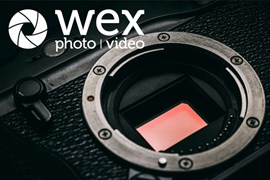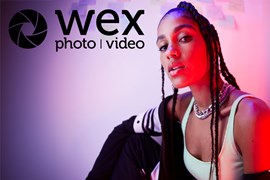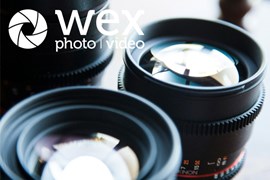
Phil Hill is a sports and outdoor lifestyle photographer based in the UK. His engaging, filmic photographic style has allowed him opportunities to travel the world, capturing sporting events and branded content. From large cities to remote event locations, Phil has learned to trust his instincts and play to his strengths, leaning into his first-hand experience of the sports he photographs.
Phil has worked with several high-profile clients and brands, and in this interview, we will delve into Phil's journey as a sports photographer, his creative process and ask him to share some tips for any aspiring sports photographers.
Leo White: What inspired you to become a sports photographer?
Phil Hill: I graduated from University as a graphic designer in 2003 and set up a design agency three weeks later. I ran that business until 2015 and worked with a range of clients. I was always drawn to photography. Whenever I could get on a photoshoot, I was there, and I loved it.
I do a lot of sports myself, like running, cycling and triathlons. I would always take my camera with me, capturing the scenes I saw. Slowly, people started asking if I would photograph them. I found that taking photos just made me happy. I enjoyed the graphic design work - the visual aspects and the composition - but as I began photographing more people, and thanks to a friend who instilled confidence in me, I decided to take a chance. Before long, I left my design agency to pursue photography.
As a design agency, we dealt with a broad range of clients, but it was the specialist sports jobs I enjoyed the most. So, when I transitioned to photography, I focused on the subjects I enjoyed and understood. I understood what it was like to finish an ultramarathon. I understood what it felt like to swim in the sea. I had first-hand experience with the nuances of the movements. I understood the community of these sports - people supporting one another.

LW: What's your favourite sport to shoot and why?
PH: Running is the sport I understand the most. I love adventure and trail running. And, because I do it myself, it’s easy for me to immerse myself in it. Although recently, I have found a love for photographing and filming in water. There’s something so peaceful about it.
LW: What's the most memorable sporting event you've ever captured and why?
PH: Trail running is one of my favourite things to photograph because of the places it can take you. You end up in remote locations that you wouldn’t usually go to.
One event that stands out is when I was photographing a race up on Snowdon. It wasn’t the photos I took but the experience itself. I travelled there the night before the race and decided to run up part of the trail to check out the route. I went most of the way up before having a break to enjoy the setting sun. As I sat down (as probably the only person for miles around), I was taken by the sheer beauty and the complete silence of the scene before me. I reflected on how lucky I am to be a photographer and how it allows me to experience places like this. And then the next day, with the race and an uncomfortable heatwave, there were something like 2 million tourists up the mountain. It was both shocking and incredible to see such a difference.
I have travelled to remote locations, to extreme environments and had long sleepless nights travelling upwards of 50 hours at a time - but this doesn’t bother me. For all the hardships, I experience the world and see magical environments that I would never get to see otherwise.

LW: Can you walk me through your creative process when capturing a sporting event?
PH: That’s a tricky one as it depends on the event. With the Snowdon event, I was able to check out the route and get a feel for what to expect. But there are events like an ultramarathon I shot in Croatia last year. This was a 5-day event through the mountains and there was no way I could go out there and scope out the route. With events like that, I’ve found that it’s best to talk to locals. Speak to people who might know the area or the best vantage points. If you don't know anyone locally, put messages out on social media. Talk to people and get a feel for the location.
Natural light plays a huge factor in event photography. It is possible that the lighting at a location at midday is terrible, but later that same day, it may be stunning. With events, you have to think on your feet. You often have to run back or ahead of the group to get the shots you need. You make the best of the situation in front of you. I liken it to wedding photography in that you must adapt to the situation and deal with what you’re given - lighting or subject-wise.
LW: Do you feel the same for posed branded or non-event work?
PH: Well, if I am asked to photograph yoga, for example, I won’t ask for the individual to pose. I’d much rather they go through a flow and do the exercises as they usually would. I will be there to capture the real moments instead of posed scenes. Allowing an individual to simply do their thing makes for more natural images.

LW: What equipment do you typically use?
PH: I shoot on a Sony A9. I love that camera. My particular A9 is very beaten up, but it just keeps on going. It was even flooded once on an underwater shoot - the housing I was using leaked. That was a costly test shoot.
Lens-wise, I shoot with a Sony 100-400 GM, Sony 35mm f1.4, Tamron 17-28mm and Tamron 28-75mm. But, my favourite lens of all is the Samyang 85mm f1.4. It does something with sun flares and golden hour. It also shoots noticeably warmer than other lenses - it is just flawless. Recently, unless I have specifically needed a longer lens or more compression, I have just used the Sony 35mm and Samyang 85mm. That combination has forced me to think about my positioning and about moving around a subject rather than just zooming in.
As I take on more non-event jobs - more considered work - I am using artificial lighting more. For the event work, running up hills with all that kit isn’t practical. It was just too much for me. But coming into this profession without experience or assisting other photographers has meant I have had to learn as I go. I will endeavour to learn more about it because it amazes me what is possible.
Last year, I worked on a commercial job in Portugal. It was a 50-person crew shooting a TV advertisement - I was shooting the stills. The production was huge and they brought an unbelievable amount of equipment. It fascinated me how they were able to layer light and build the scene, changing the atmosphere with light alone. It’s that level of detail that I want to bring to my photography.

LW: What separates your images from other sports photographers?
PH: I feel that because I do the sports that I shoot, it makes a difference - especially for the brands who are paying for it. Understanding the sport and getting inside the head of the person photographed gives me a unique perspective. I also think that being a graphic designer for 12 years has given me a slightly different eye for composition. I also love landscape photography. I almost consider myself a landscape photographer who happens to have a person running or cycling through the photos!
LW: Can you share some tips for capturing dynamic and engaging sports photographs?
PH: It’s all about freezing the action. Shoot with a high shutter speed and in burst mode. When I photograph runners, I shoot in burst mode at 1/1000th second and up, depending on the lighting. If I am using lights, I’ll use continuous lighting over strobe because of recycle time. When it’s a brand shoot, being weary of where the logo is on the clothing is important. There can be seconds between a logo being visible and then covered. Then, it’s the challenge of capturing the logo while capturing beautiful photos of the sportsperson.
Portraiture can be a powerful addition to both event and branded shoots. In the past, I have found it challenging to overcome my anxieties about photographing portraits. There was one cycle race where a strong headwind had made the race all that bit harder for the participants. When they crossed the finish line, they all fell to the floor. I had to capture that pure exhaustion and emotion - the pain but relief on their faces. But, I was using a 35mm and therefore had to get up close. I wouldn’t have been able to capture the same feel had I stood back with a 70-200mm and photographed them from afar. But the difficult part was fighting my anxiety that questioned what the people thought about me taking photos so close and whether I would upset them. Fortunately, I overcame that feeling and they are some of my favourite photographs.

LW: What advice would you give to someone who wants to pursue a career in sports capture?
PH: Keep practicing and lean to the sport you know the most about.
- When I stepped away from my design company, I would constantly shoot and contact race organisers. I’d ask if I could photograph the race - often shooting for free. Instagram has been an excellent tool for creating contacts. I have a big shoot coming up that wouldn’t have happened had I not reached out to a person on Instagram 4 years ago.
- You should learn everything about your camera. Push the camera as far as it will go. Have muscle memory for every situation so you don’t have to think technically about your camera. Get to the point where you know your camera so well that you don’t need to think; you can simply adapt in the heat of the moment.
- As you progress as a creative professional, contracts must be written up and signed by all parties involved. Most people are trustworthy but there are those who are not. And, it’s not worth your time, energy or money having to go through the bother of small claims court if a client doesn’t deliver or pay.
- I’d advise hiring a mentor. I approached a photographer last year and having that person as a mentor - a person to bounce ideas off of and ask questions - has been invaluable for me. I was trying to do it all myself and that can get you so far, but it’s okay to ask for help.
The initial feeling of whether I needed a mentor lifted after the first big job. Thanks to his experience as a professional photographer, he helped me understand how I could better cost my projects and my processes for clients. Since hiring my mentor, I’ve had so many more opportunities and the advice and insight have helped launch my photographic career.
LW: Have you got any exciting projects coming up that you would like to tell us about?
PH: Yes! A few things coming up are two events in America. There’s one in the Mojave desert and another 135-mile race through Death Valley. I’m photographing, filming and being part of the race crew for that race - that will be a bit of a juggle of duties!
I’m off to Madeira for an Action and Adventure shoot for the tourism board. To Scotland for an outdoor fashion campaign. And a trip to the Dolomites to shoot trail running.
The fact that I get to visit these amazing places makes me appreciate how fortunate I am to be a photographer all the more.











